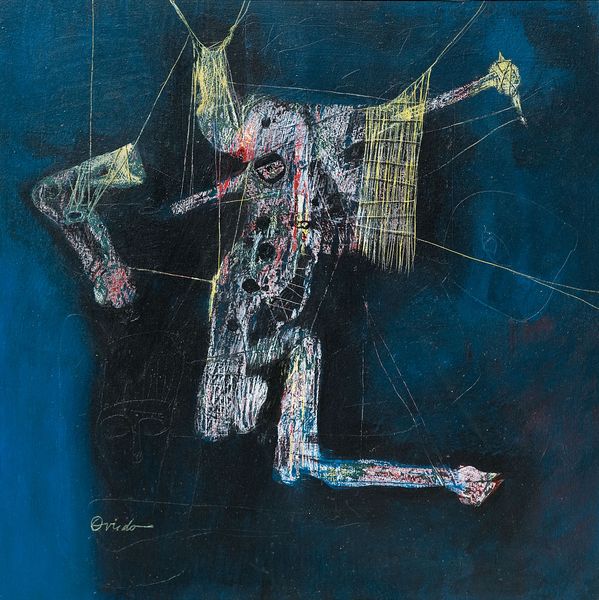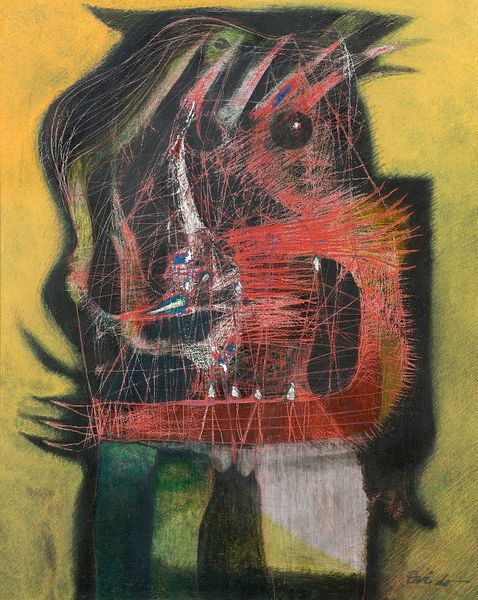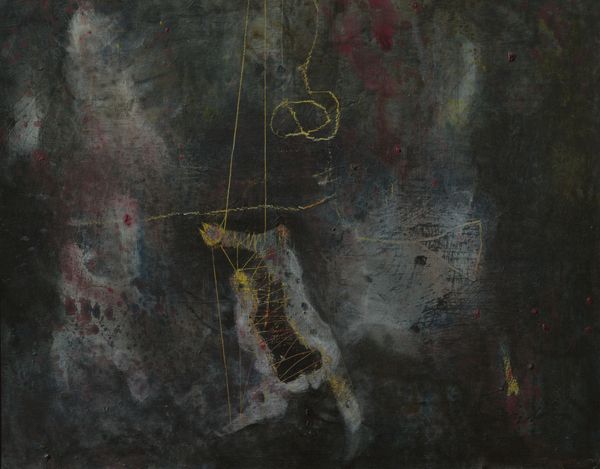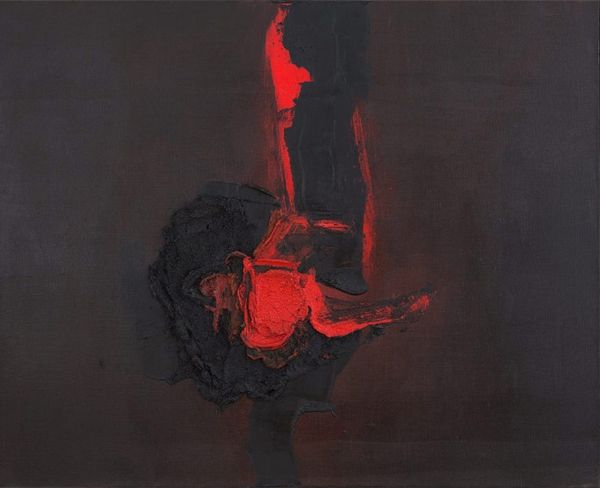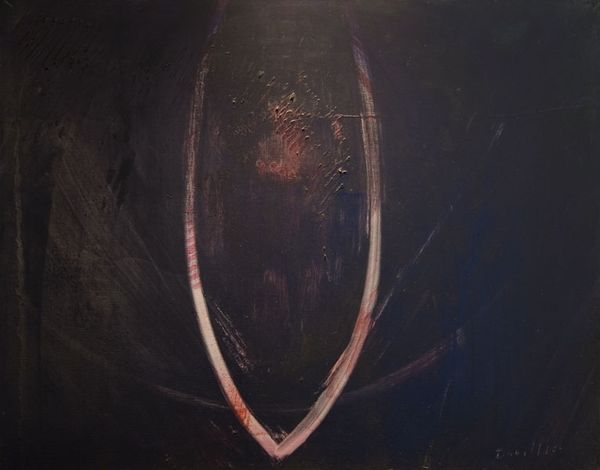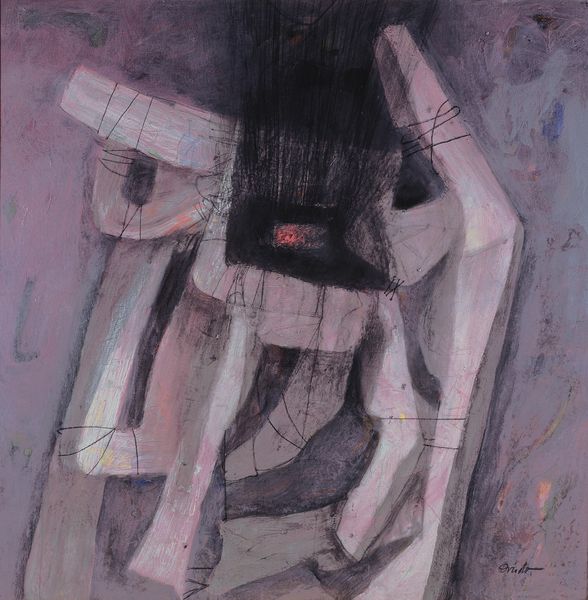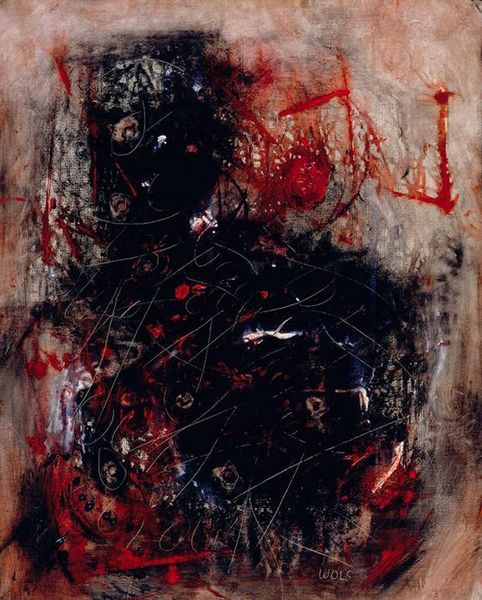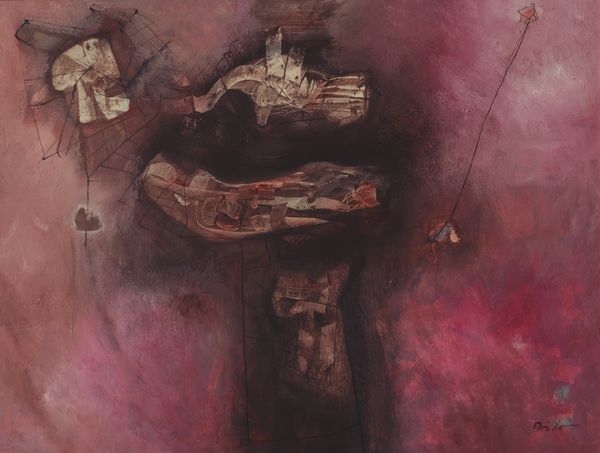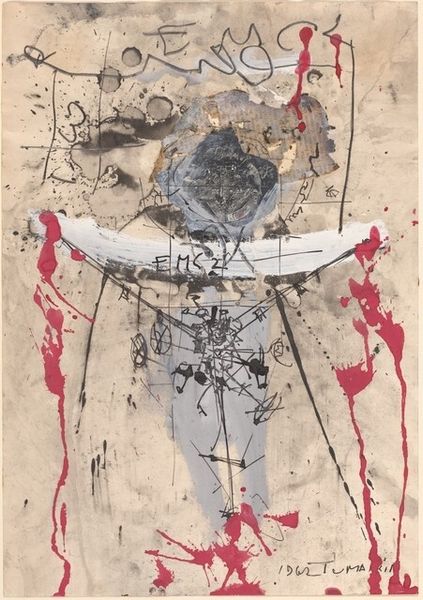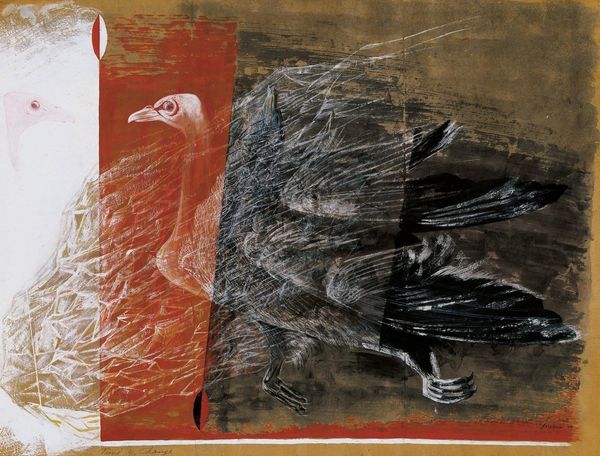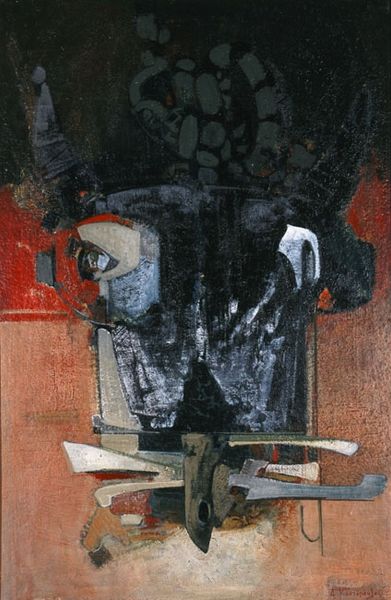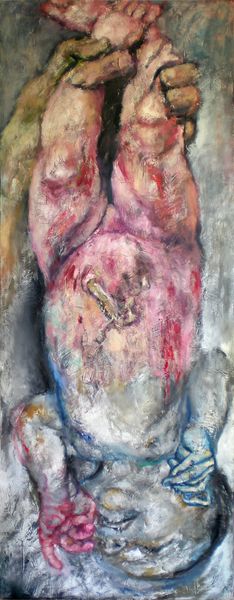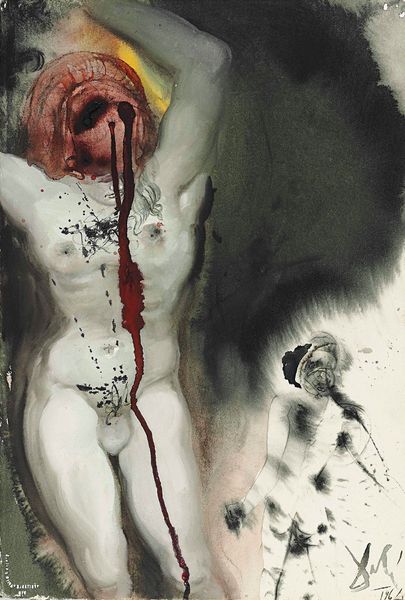
painting, acrylic-paint
#
abstract painting
#
painting
#
acrylic-paint
#
figuration
#
neo expressionist
#
neo-expressionism
#
abstraction
#
line
Copyright: Ramon Oviedo,Fair Use
Curator: Ramon Oviedo’s acrylic painting, "Simulacro," strikes me with its almost visceral rawness. The deep crimson ground overlaid with dark, amorphous forms generates an immediate sense of unease. Editor: Agreed. My first impression orbits around the stark contrast in the materiality here. The rich impasto of the dark pigment against the comparatively smooth field of red demands an examination of the artist’s process, especially how texture underscores thematic intent. Look at how the white lines create the sense of brokenness to this central character or body. Curator: Absolutely. Note the masterful use of line throughout the composition. Linear elements serve not just to define form, but also to create a web-like structure, connecting disparate shapes and implying constraint or tension, a structural motif integral to Neo-Expressionist works which tend to have deconstructed forms, a quality shared with abstract figurations, though I admit it pushes towards abstraction proper. Editor: Indeed. But let's not forget the social contexts that informed Oviedo’s practice. Consider the power dynamics at play – "Simulacro," which is a "simulacrum", suggests a fabricated reality or a manipulated representation, echoing socio-political criticisms prominent in Latin American art during periods of dictatorship and unrest. The very act of representing a body bound, almost puppet-like, speaks to these conditions. What material constraints impacted him, in terms of paints and other materials, as well as societal constraints? Curator: That resonates deeply, grounding our formal observations in the lived experience embedded within the work. I see your point about a sociopolitical dimension; the painting could easily be interpreted as an existential statement about the human condition, with its fractured form struggling within the confines of imposed structure. Editor: And if we circle back to the artist's choice of acrylic – a relatively modern, readily available medium compared to traditional oils – it emphasizes accessibility. Does this democratize the artmaking process, allowing for broader voices to engage in social critique through tangible, material means? Curator: A compelling question. Oviedo’s "Simulacro," despite its formal abstraction, ultimately reveals layers of meaning, from structural analysis to socio-political commentary. Editor: A striking synthesis, indeed. This conversation reaffirms my perspective on the importance of integrating material awareness with historical understanding. Thank you.
Comments
No comments
Be the first to comment and join the conversation on the ultimate creative platform.
